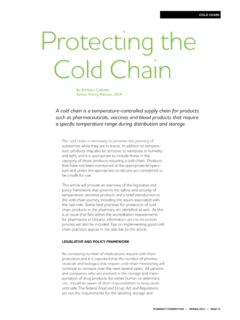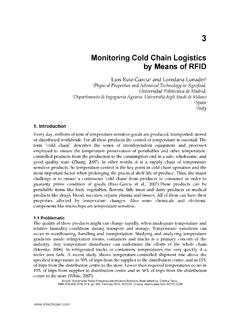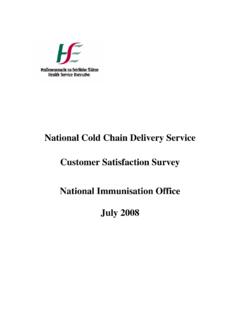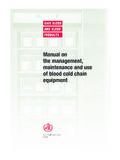Transcription of Reviving the Cold Case: An Analytical Approach to Case Closure
1 2009 Mark R. Dobbs 1 Reviving the cold case : An Analytical Approach to case Closure Mark R. Dobbs & Michael T. Voss Crime analysts are always trying to find new ways to apply their skills and hone their craft. The vast majority of us are thinkers; we are curious problem solvers who believe that our ability to benefit our agencies is limited only by the latitude we are given. It is understandable then that we should seek out more opportunities to apply our skills and make more positive impacts within our jurisdictions.
2 It is this general attitude that led us to get involved in investigating cold cases. How We Got Started Mark had, for several years, been consulting with our Coroner s Division as a forensic anthropologist. During this time he came to learn that there were numerous coroners cases in which the identity of the decedent was unknown. These cases were kept in three-ring binders on a shelf in the Sergeant s office. Over the years, in the course of this forensic work, we would discuss these cases and the progress that was being made on them.
3 The conversation usually ran along the lines of us asking any luck with that 1980 homicide victim? and the sergeant answering well, we ve gotten so many new cases that I haven t been able to even look at it yet. This went on for a few years and through two different sergeants. One day we, as a crime analysis unit, were brainstorming about how we could broaden our client base , as it were. We had been successful in integrating ourselves into our Investigations Bureau and had been involved in numerous major cases.
4 And, of course, we had always been active in producing tactical and strategic analyses for our patrol personnel. But we knew that we could be doing more, particularly given the size and responsibilities of our agency. It was during this brainstorming session that we remembered those dusty binders on the Sergeant s shelf. Surely there must be a way that we can help with those old cases, we thought. When we asked ourselves what makes a case go cold ? we came up with four inter-related factors. We see these factors as being links in a chain of causation, with each link decreasing the chances that the case will be successfully solved.
5 A lack of evidence at the outset is probably the primary reason why a case can become stale. This may seem an obvious point, and it is. But we may borrow from Edmund Locard and say that, just as every contact leaves a trace, every 2009 Mark R. Dobbs 2case has evidence. There is always an angle, an opening, some loose end that, when pulled, will unravel the entire matter. But evidence is in the eye of the beholder, and no two beholders have exactly the same perspective (more on that a bit later). The passage of time becomes the next link in the causal chain.
6 Relatively few cases are completely without leads at the outset. This is particularly true of most violent crime, in which the majority of victims have some sort of relationship with the suspect. However, there is a reason for the well-known axiom that the most critical time in a major investigation is the first forty-eight hours. In the passage time leads can dry up as witnesses memories fade and clues become stale. This is especially true for cases that are many years old. But, as we will demonstrate, just as time can be an enemy, it can also be an ally to those who are patient and persistent.
7 Nothing saps the energy out of a case faster than the influx of newer cases that dominate the investigative priority list. This is our third link in the chain. Investigators do not have the luxury of focusing all of their attention on just one case . In most jurisdictions a detective will juggle a load of cases, in much the same way that a juggler keeps multiple balls in the air by giving attention to one thing at a time while giving the illusion of multitasking. In this way, the investigative strength is diluted and individual cases, those with fewer leads, atrophy.
8 What an investigator needs more than anything is help. Dear reader, read on. So, there is not enough evidence, time passes, new cases come along and then the final blow to the cause comes when the investigator gets transferred to another unit or division or retires altogether. Not only do you have a thin case , but now you have a thin case that is reassigned to a person who is unfamiliar with it and is less invested in its outcome. This lack of investigative continuity will drop the temperature of the investigation even further.
9 Then years later, when somebody is searching for size 2 binder clips in the storage room, our forlorn case file is found and the finder exclaims: oh, I remember hearing about this case from detective Z who heard about it from Captain Y, who was a sergeant when it was being investigated by detective X. Analyst to the rescue! As we discussed these factors, it became very clear very quickly that we were uniquely positioned to provide a needed boost to those cold cases. We had the time, as long as we prioritized the rest of our work.
10 And, unlike the investigators, we weren t saddled with an ever-growing active case load. Plus, we knew that our Analytical training could go a long way to shedding new light on these cases and perhaps teasing out new leads from the existing information. Finally, as our fellow analysts know, a strong Analytical unit is a repository of information and can supply broad institutional knowledge that will remain, regardless of changes in investigative personnel. This knowledge is essential in providing the analyst 2009 Mark R.










